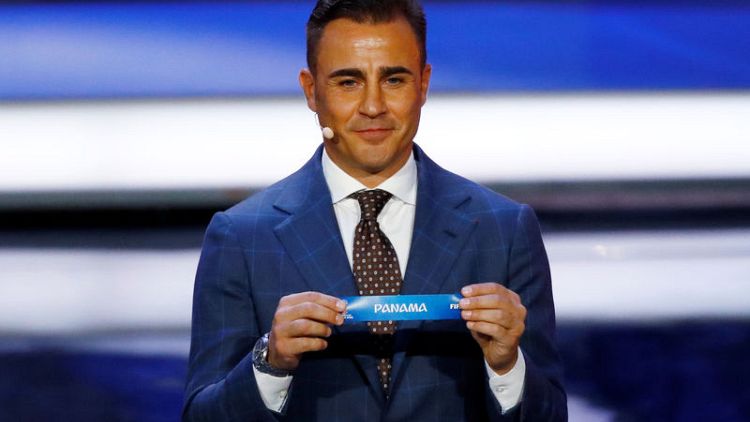By Michael Church
HONG KONG (Reuters) - Fabio Cannavaro cast an envious glance at the strength of Japanese football as he picked over the bones of Guangzhou Evergrande's Asian Champions League semi-final exit on Wednesday evening, after Chinese clubs again fell short in the continental championship. It has been four years since Guangzhou reached the final of the competition, when the club won the second of their two continental crowns, but their hopes of ending that drought came unstuck when they lost to Urawa Red Diamonds. A Shinzo Koroki header completed a 3-0 aggregate win for the J.League side, who have reached the final for the second time in three years despite languishing in the lower reaches of their domestic league this season. Urawa's success throws into sharp focus the contrast between standards of play in Japan and China, two nations who should be major on-field rivals. But while the Chinese continue to invest heavily in the sport, Cannavaro believes the gulf has grown and is likely to increase further. "I think there didn't used to be such a gap between Japanese and Chinese teams, but the gap has become wider in the past 20 years," the Italian told reporters after the match. "The Japanese have invested a lot of funds in cultivating football players in the past and they have taken the lead with that strategy. "But in our experience they have more advantages in terms of their physical condition, which could be seen today. Japanese players, when they are competing, they are more engaged and focussed and we can learn from them." Money has poured into the Chinese game in recent years as private business has sought to deliver on president Xi Jinping's desire to see the country become a force in the global game.
FOREIGN PLAYERS
Too often, though, most of those funds have gone into signing foreign players at the end of their careers, rather than on further developing the game at youth and grassroots level. As a result, the Chinese national team continues to struggle, prompting soccer authorities to seek to naturalise overseas players to strengthen the Marcello Lippi-coached squad which is bidding to qualify for the 2022 World Cup in Qatar. China have not appeared at the finals since their debut appearance in 2002. More worryingly the country hasn't qualified for the Under-17 and U20 World Cup tournaments since 2005. The Japanese, by contrast, go from strength to strength, with their youth teams consistently among the best in the continent. Urawa, meanwhile, will be looking to keep the Asian Champions League trophy in Japan for a third successive year, following their own success in 2017 and Kashima Antlers' title win last year. Their performances highlight the in-depth strength of the J-League in comparison to other set-ups around the region, despite a growing exodus of players to Europe. Only three Japan-based players featured in the national team squad during their recent World Cup qualifying matches against Mongolia and Tajikistan - both of which Hajime Moriyasu's side won comfortably - with none from Urawa. That, perhaps more than anything, highlights the gap between the countries. Urawa, 12th in the J-Leagues, have been responsible for the elimination of all three of the top Chinese Super League sides - Guangzhou, Shanghai SIPG and Beijing Guoan - from this year's Asian Champions League. "In the past Chinese teams were as good as Japanese teams because Evergrande used to have the best players in China," said Cannavaro. "However, now our team and our players are not as strong as them."
(Reporting by Michael Church; Editing by David Holmes)
